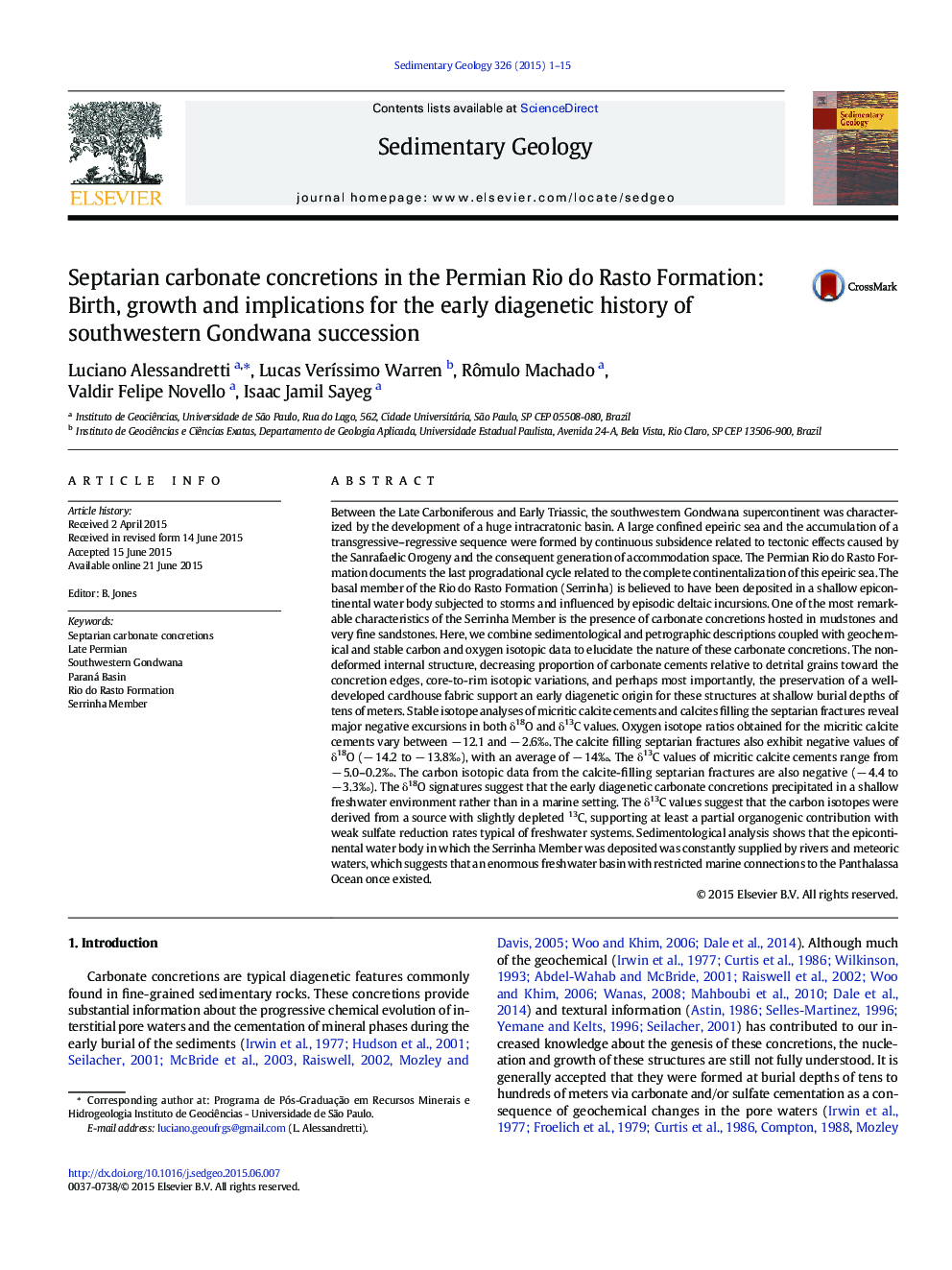| کد مقاله | کد نشریه | سال انتشار | مقاله انگلیسی | نسخه تمام متن |
|---|---|---|---|---|
| 4689197 | 1636037 | 2015 | 15 صفحه PDF | دانلود رایگان |
• Negative excursions of stable δ18O and δ13C isotopes
• δ18O signatures point to a freshwater depositional environment.
• δ13C reveals low rates of primary productivity at the surface of the freshwater body.
• Weak sulfate reduction rates typical of freshwater systems
Between the Late Carboniferous and Early Triassic, the southwestern Gondwana supercontinent was characterized by the development of a huge intracratonic basin. A large confined epeiric sea and the accumulation of a transgressive–regressive sequence were formed by continuous subsidence related to tectonic effects caused by the Sanrafaelic Orogeny and the consequent generation of accommodation space. The Permian Rio do Rasto Formation documents the last progradational cycle related to the complete continentalization of this epeiric sea. The basal member of the Rio do Rasto Formation (Serrinha) is believed to have been deposited in a shallow epicontinental water body subjected to storms and influenced by episodic deltaic incursions. One of the most remarkable characteristics of the Serrinha Member is the presence of carbonate concretions hosted in mudstones and very fine sandstones. Here, we combine sedimentological and petrographic descriptions coupled with geochemical and stable carbon and oxygen isotopic data to elucidate the nature of these carbonate concretions. The non-deformed internal structure, decreasing proportion of carbonate cements relative to detrital grains toward the concretion edges, core-to-rim isotopic variations, and perhaps most importantly, the preservation of a well-developed cardhouse fabric support an early diagenetic origin for these structures at shallow burial depths of tens of meters. Stable isotope analyses of micritic calcite cements and calcites filling the septarian fractures reveal major negative excursions in both δ18O and δ13C values. Oxygen isotope ratios obtained for the micritic calcite cements vary between − 12.1 and − 2.6‰. The calcite filling septarian fractures also exhibit negative values of δ18O (− 14.2 to − 13.8‰), with an average of − 14‰. The δ13C values of micritic calcite cements range from − 5.0–0.2‰. The carbon isotopic data from the calcite-filling septarian fractures are also negative (− 4.4 to − 3.3‰). The δ18O signatures suggest that the early diagenetic carbonate concretions precipitated in a shallow freshwater environment rather than in a marine setting. The δ13C values suggest that the carbon isotopes were derived from a source with slightly depleted 13C, supporting at least a partial organogenic contribution with weak sulfate reduction rates typical of freshwater systems. Sedimentological analysis shows that the epicontinental water body in which the Serrinha Member was deposited was constantly supplied by rivers and meteoric waters, which suggests that an enormous freshwater basin with restricted marine connections to the Panthalassa Ocean once existed.
Journal: Sedimentary Geology - Volume 326, 1 August 2015, Pages 1–15
